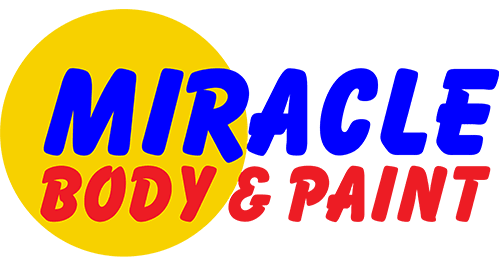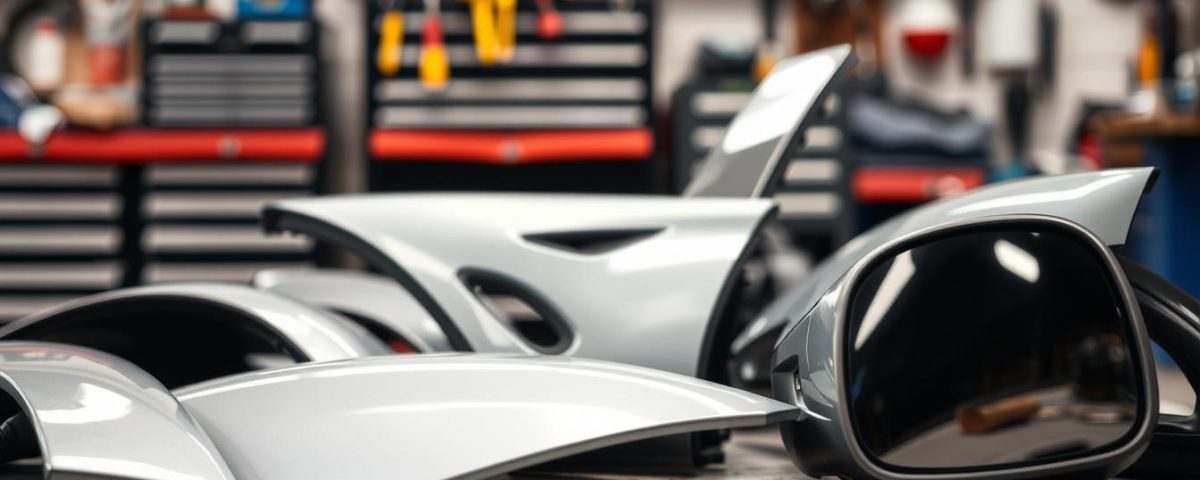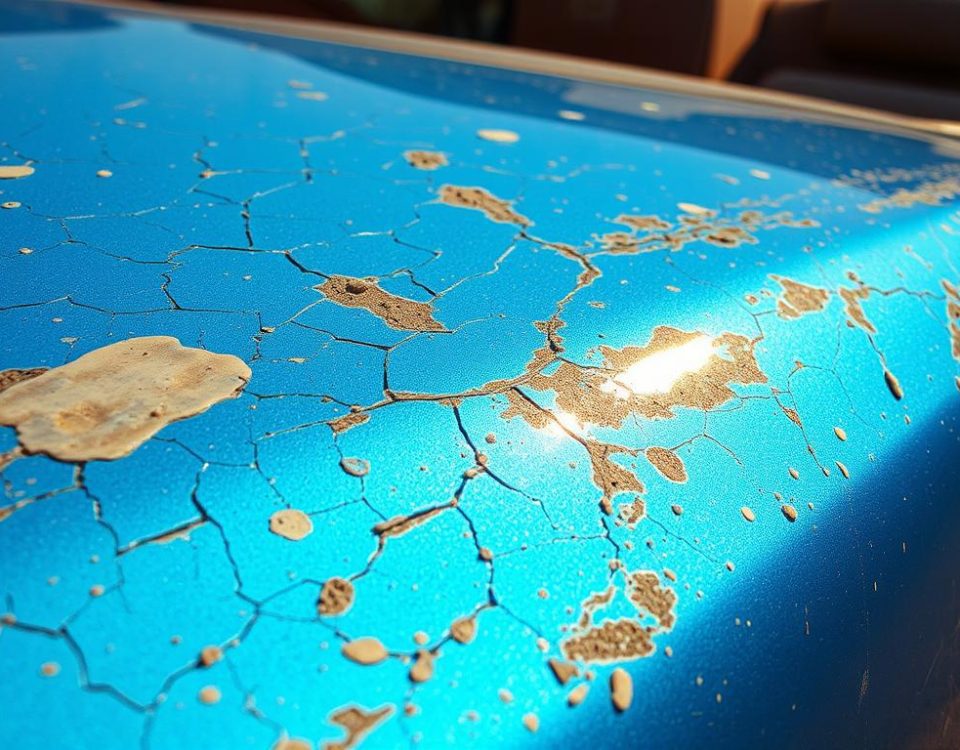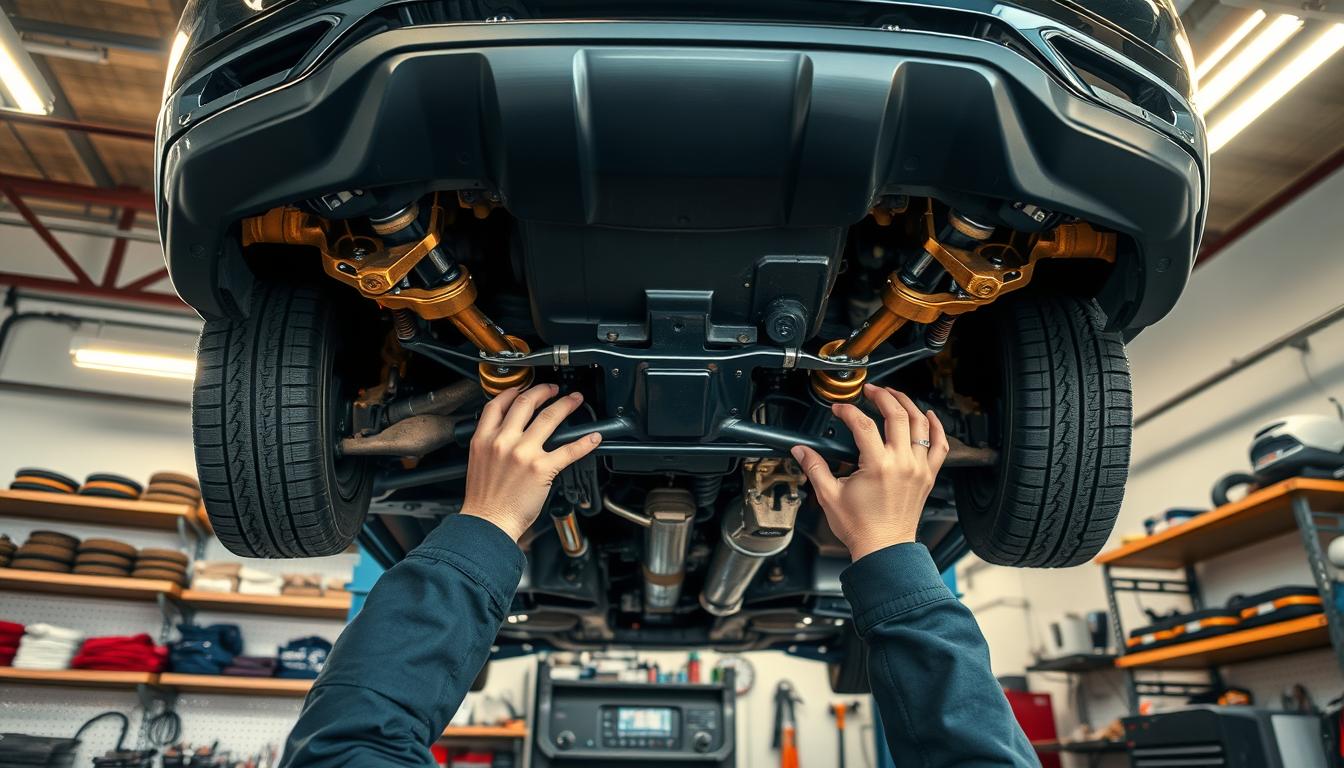
How to Save Money on Auto Body Repair After a Collision
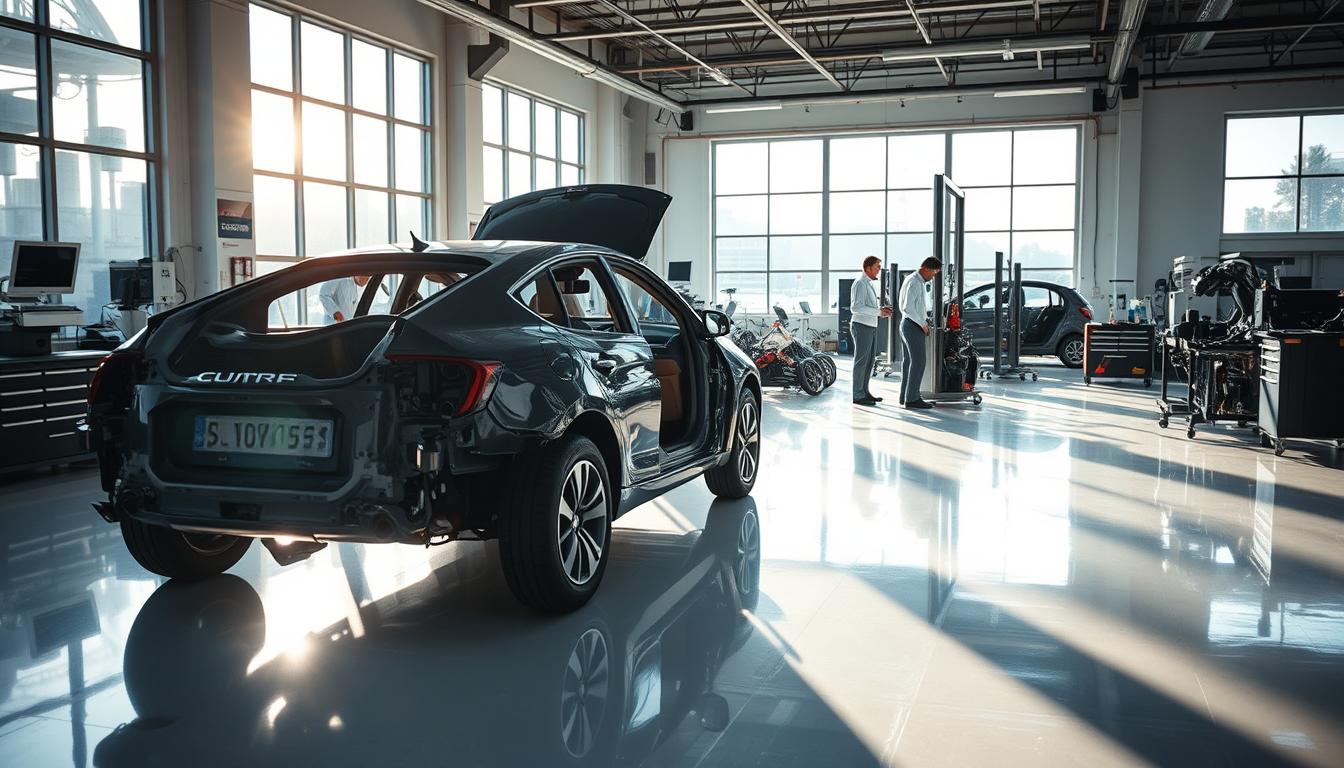
How to Choose the Right Collision Repair Shop in San Antonio
Deciding whether to repair or replace a damaged auto body part can be a complex decision, involving considerations of cost, potential waste, and the extent of the damage.
At Miracle Body and Paint, with two convenient locations in San Antonio, our experts understand the nuances involved in making this decision.
Whether you’re dealing with minor scratches or significant damage, our team is here to guide you through the process, ensuring that you receive the most cost-effective and efficient solution for your vehicle’s needs.
Key Takeaways
- Assessing the extent of damage is crucial for deciding between repair and replacement.
- Cost considerations play a significant role in the decision-making process.
- Expert advice from professionals like those at Miracle Body and Paint can be invaluable.
- The decision to repair or replace affects the overall outcome and cost of the repair.
- Miracle Body and Paint offers expert services for collision repair needs in San Antonio.
Understanding Auto Body Damage Types and Severity
Assessing auto body damage requires a thorough understanding of the different types and their potential impact. Auto body damage can be broadly categorized into two main types: cosmetic and structural.
Cosmetic vs. Structural Damage
Cosmetic damage affects the appearance of the vehicle, including scratches, dents, and paint damage. While cosmetic issues may not compromise the vehicle’s safety or functionality, they can still impact its overall value and aesthetic appeal. On the other hand, structural damage affects the vehicle’s frame, suspension, or other critical components, potentially compromising its safety and performance.
Impact of Damage on Vehicle Safety
The severity of auto body damage can have significant implications for vehicle safety. Structural damage, in particular, can increase the risk of injury or further damage in the event of another collision. It’s essential to assess the damage carefully to determine whether repairs can restore the vehicle to a safe condition.
Common Auto Body Damage Scenarios
Common scenarios where auto body damage occurs include collisions, parking lot incidents, and weather-related events. Understanding these scenarios can help vehicle owners take preventive measures and be more aware of the potential risks. At Miracle Body and Paint, experts are trained to evaluate and address various types of auto body damage, ensuring that vehicles are restored to their original condition.
When to Replace a Part: Key Decision Factors
Understanding when to replace a damaged auto body part is essential for maintaining vehicle safety and performance. The decision-making process involves evaluating several critical factors that impact the vehicle’s overall condition and value.
Age and Condition of the Vehicle
The age and overall condition of the vehicle play a significant role in deciding whether to repair or replace a damaged part. For newer vehicles, replacement is often the preferred option to maintain the vehicle’s value and ensure safety. In contrast, for older vehicles, the decision may lean towards repair if the damage is minor and the vehicle’s overall condition is still good.
Extent of Damage to the Part
Assessing the extent of damage to the auto body part is crucial. If the damage is extensive and compromises the structural integrity or safety of the vehicle, replacement is usually the best course of action. Minor cosmetic damage might be repairable, but significant damage often necessitates replacement.
Cost Comparison: Repair vs. Replacement
A detailed cost comparison between repairing and replacing the damaged part is essential. In some cases, the cost of repair can be close to or even exceed the cost of replacement. It’s also important to consider the long-term implications of each option on the vehicle’s performance and safety.
Availability of Replacement Parts
The availability of replacement parts can significantly influence the decision. If the necessary parts are readily available and affordable, replacement becomes a more viable option. Conversely, if parts are scarce or expensive, repair might be considered, provided it’s feasible and safe.
By carefully evaluating these factors, vehicle owners can make informed decisions about when to replace damaged auto body parts, ensuring their vehicle remains safe, performs well, and retains its value.
Signs That a Bumper Needs Replacement Rather Than Repair
When it comes to auto body repair, determining whether to replace or repair a damaged bumper is crucial. A bumper may seem like a cosmetic component, but it plays a significant role in vehicle safety and structural integrity.
The decision to replace a bumper depends on several key factors. Understanding these factors is essential for making an informed decision.
Visible Cracks and Structural Compromise
One of the primary indicators that a bumper needs replacement is the presence of visible cracks or structural compromise. If the bumper is cracked or broken, it may not be able to perform its intended function, which is to absorb impact and protect the vehicle’s occupants.
Damaged Mounting Points and Brackets
Another critical factor is the condition of the bumper’s mounting points and brackets. If these are damaged, the bumper may not be securely attached to the vehicle, which can lead to further damage or safety issues.
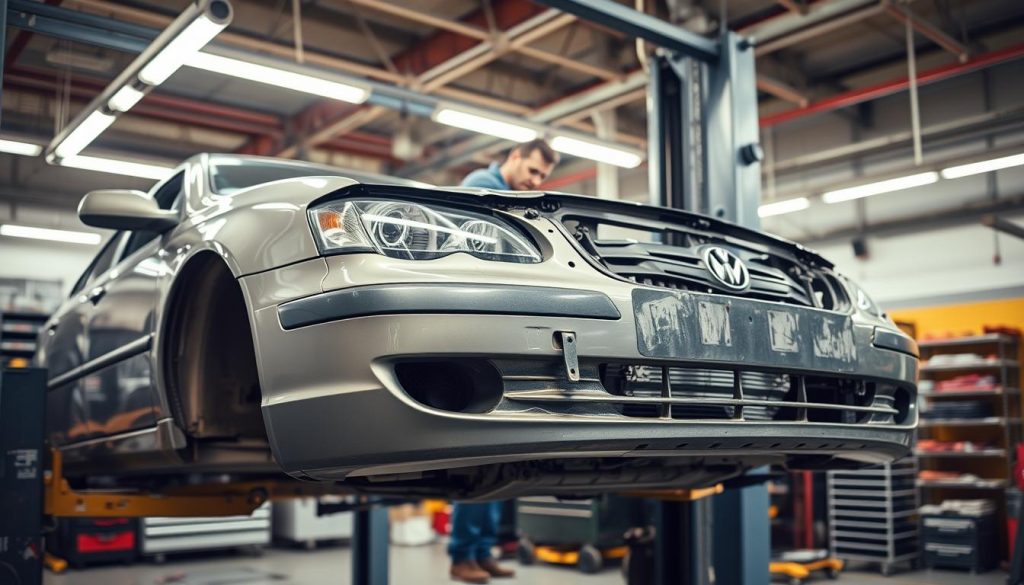
Impact on Sensors and Safety Systems
Modern vehicles often have sensors and safety systems integrated into the bumper. If the bumper is damaged, it can impact the functioning of these systems, potentially compromising vehicle safety.
In conclusion, while some bumper damage can be repaired, there are clear signs that indicate when replacement is necessary. A professional assessment is recommended to determine the best course of action.
When to Replace Damaged Doors, Hoods, and Panels
Damaged doors, hoods, and panels are more than just cosmetic issues; they can compromise your vehicle’s safety and functionality. When assessing whether to repair or replace these parts, several factors come into play.
Assessing Door Damage and Functionality
When evaluating door damage, it’s crucial to consider both the cosmetic appearance and the door’s functionality. A door that doesn’t close properly or has significant structural damage may need to be replaced. Check for any signs of collision damage that could affect the door’s alignment or operation.
Hood Damage Evaluation Criteria
The hood is a critical component that protects the engine and other vital systems. If the hood is severely dented or damaged, it may be more cost-effective to replace it rather than repair it. Consider the extent of the damage and whether it affects the hood’s structural integrity or its ability to function correctly.
Quarter Panels and Fenders: Repair vs. Replace Guidelines
Quarter panels and fenders are prone to damage in collisions. When assessing damage to these areas, consider the extent of the damage and the cost of part replacement. If the damage is minor and cosmetic, repair might be sufficient. However, significant structural damage often warrants replacement to ensure the vehicle’s safety and performance.
In conclusion, replacing damaged doors, hoods, and panels is a decision that should be based on a thorough assessment of the damage and the part’s role in the vehicle’s overall safety and functionality. By considering these factors, vehicle owners can make informed decisions about part replacement after a collision.
Frame Damage: Critical Assessment Guidelines
The frame of a vehicle is its backbone, and damage to it can have serious implications on the vehicle’s overall safety and functionality. When a vehicle is involved in a collision, the frame can be subjected to various types of stress, potentially leading to bends, twists, or even breaks. Assessing the extent of this damage is crucial for determining the necessary repairs to restore the vehicle to a safe and operational condition.
Identifying Serious Frame Damage
Identifying serious frame damage requires a thorough inspection, typically performed by professionals with the right equipment and expertise. Signs of serious frame damage include visible bending or twisting of the frame, rust or corrosion that weakens the metal, and misalignment of the vehicle’s body panels or windows. Advanced diagnostic tools may be used to detect less obvious damage that could compromise the vehicle’s structural integrity.
Safety Implications of Compromised Frames
A compromised frame can significantly affect a vehicle’s safety, potentially leading to catastrophic failures during operation. The frame plays a critical role in absorbing and distributing the forces of an impact, and when damaged, it can fail to protect occupants as intended. Moreover, a weakened frame can lead to issues with the vehicle’s alignment and handling, further increasing the risk of an accident.
Modern Unibody Construction Considerations
Many modern vehicles feature unibody construction, where the body and frame are integrated into a single unit. This design can make the assessment of frame damage more complex, as the damage may not be as visible as in traditional body-on-frame vehicles. Professionals assessing unibody vehicles must be aware of the specific considerations for these designs, including the potential for hidden damage that is not immediately apparent.
In conclusion, assessing frame damage is a nuanced process that requires a deep understanding of vehicle construction and the potential impacts of collision damage on safety and performance. By identifying serious frame damage and understanding its implications, vehicle owners can ensure their cars are repaired to a safe and operational standard.
The Impact of Rust and Corrosion on Replacement Decisions
Rust and corrosion can compromise the structural integrity of vehicles, necessitating a thorough assessment for potential part replacement. When auto body parts are affected by rust, it’s crucial to evaluate the extent of the damage to determine the best course of action.
Evaluating the Extent of Rust Damage
The first step in dealing with rust is to assess its severity. This involves inspecting the affected area to identify the type of rust and its penetration depth. Surface rust can often be treated with minimal intervention, whereas more advanced rust stages may require part replacement.
- Surface rust: Can usually be sanded and treated.
- Scale rust: Indicates a more advanced stage, potentially requiring replacement.
- Penetrating rust: Often necessitates part replacement due to the structural compromise.
When Rust Makes Replacement Inevitable
In cases where rust has significantly compromised the structural integrity of a part, part replacement is often the safest and most cost-effective solution in the long run. This is particularly true for critical components where failure could lead to safety issues.
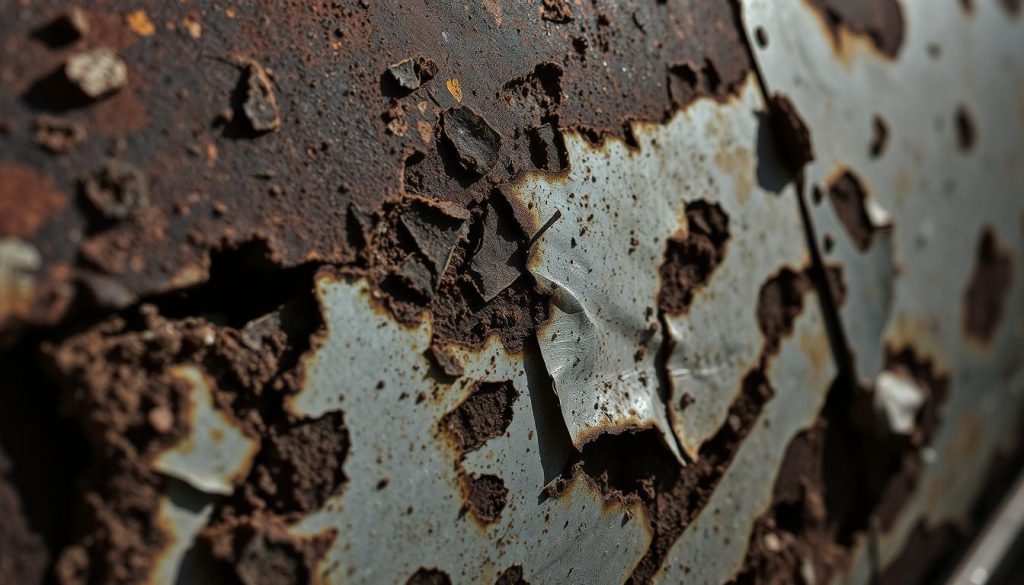
Preventing Future Corrosion After Repairs
After replacing or repairing rusted parts, applying a rust-inhibiting coating can help prevent future corrosion. Regular maintenance, including washing and waxing the vehicle, also plays a crucial role in protecting the auto body.
By understanding the impact of rust and corrosion, vehicle owners can make informed decisions about part replacement, ensuring their vehicle’s longevity and safety.
OEM vs. Aftermarket Parts: Making the Right Choice
When it comes to auto body repair, one of the most critical decisions is choosing between OEM and aftermarket parts. This decision can significantly impact the quality, safety, and cost of the repair.
Quality and Fit Differences
OEM parts are made by the vehicle’s manufacturer and are designed to match the original specifications exactly. Aftermarket parts, on the other hand, are produced by third-party companies and may vary in quality. Choosing OEM parts ensures a precise fit and maintains the vehicle’s original performance.
Price Considerations and Value
Aftermarket parts are often cheaper than OEM parts, but they may not offer the same level of quality. It’s essential to weigh the cost savings against the potential risks of using aftermarket parts.
Impact on Vehicle Warranty and Resale Value
Using OEM parts can help maintain the vehicle’s warranty and resale value. Aftermarket parts, however, may void certain warranties or decrease the vehicle’s resale value.
Ultimately, the choice between OEM and aftermarket parts depends on the specific needs and priorities of the vehicle owner. By considering factors like quality, cost, and warranty, individuals can make an informed decision that meets their needs.
Insurance Considerations for Auto Body Part Replacement
Navigating the complex process of auto body part replacement involves understanding the intricacies of insurance coverage. When dealing with collision damage, it’s essential to know how your insurance policy will impact the replacement of damaged parts.
Understanding Insurance Coverage for Damaged Parts
The first step is to review your insurance policy to understand what is covered and what is not. Most insurance policies cover part replacement costs resulting from accidents or other damages. However, the extent of the coverage can vary depending on the policy type and provider.
Working With Adjusters on Replacement Decisions
Insurance adjusters play a crucial role in determining whether a part should be repaired or replaced. It’s essential to work closely with the adjuster to ensure that the replacement decision is fair and in line with the damage assessment. Providing detailed documentation of the damage can support your case.
Documenting Damage for Claims
Thorough documentation is vital when filing a claim. Take clear photos of the damage from multiple angles, and keep records of any correspondence with your insurance provider. This documentation will help support your claim and ensure a smoother process for part replacement.
By understanding your insurance coverage and working effectively with adjusters, you can navigate the process of auto body part replacement with confidence.
Professional Assessment: What Expert Collision Repair Technicians Look For
Assessing damage is not just about looks; it’s about safety and performance, say expert technicians. When a vehicle is involved in a collision, the damage can be more extensive than what meets the eye. Expert collision repair technicians use a combination of experience, training, and advanced tools to assess the damage accurately.
Advanced Diagnostic Tools and Methods
Modern vehicles are complex machines with sophisticated safety features and structural designs. To assess damage properly, technicians employ advanced diagnostic tools and methods. These may include:
- Electronic measuring systems to assess frame damage
- High-resolution imaging to inspect hidden areas
- Specialized software to analyze the vehicle’s structural integrity
Hidden Damage That Requires Replacement
Sometimes, the most significant damage is not visible to the naked eye. Hidden damage can compromise the vehicle’s safety and performance. Expert technicians are trained to identify such damage, which may include:
- Structural damage to the frame or unibody
- Compromised safety features, such as airbags or crumple zones
- Damage to critical systems like steering or suspension
The Value of Professional Opinions from Miracle Body and Paint
Choosing the right collision repair service is crucial. Miracle Body and Paint brings years of experience and a commitment to quality. Their expert technicians provide professional opinions that are invaluable in determining the best course of action for repairs. By choosing a reputable service like Miracle Body and Paint, vehicle owners can ensure their car is restored to its original condition, maintaining its safety, performance, and value.
Conclusion: Protecting Your Vehicle’s Safety, Performance, and Value
Deciding when to replace a damaged auto body part can be complex, involving considerations of safety, cost, and the vehicle’s overall condition. Throughout this article, we’ve explored the various factors that influence this decision, from assessing the extent of collision damage to understanding the implications of choosing between original equipment manufacturer (OEM) and aftermarket parts for auto body repair.
Protecting your vehicle’s safety, performance, and value requires careful consideration of part replacement. Whether dealing with cosmetic damage or more serious structural issues, the goal is to restore your vehicle to its pre-accident condition. This involves not just repairing visible damage but also addressing any underlying issues that could compromise the vehicle’s integrity.
Seeking a professional assessment from experts like those at Miracle Body and Paint can provide invaluable insights into the necessary repairs and replacements. Their expertise ensures that your vehicle is restored to a safe and functional state, preserving its value and performance. For collision damage repair, trust the professionals at Miracle Body and Paint. With two convenient locations in San Antonio, they are well-equipped to handle all your auto body repair needs, ensuring your vehicle is back on the road safely and efficiently.

